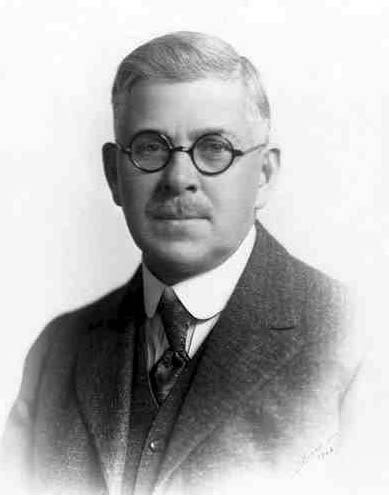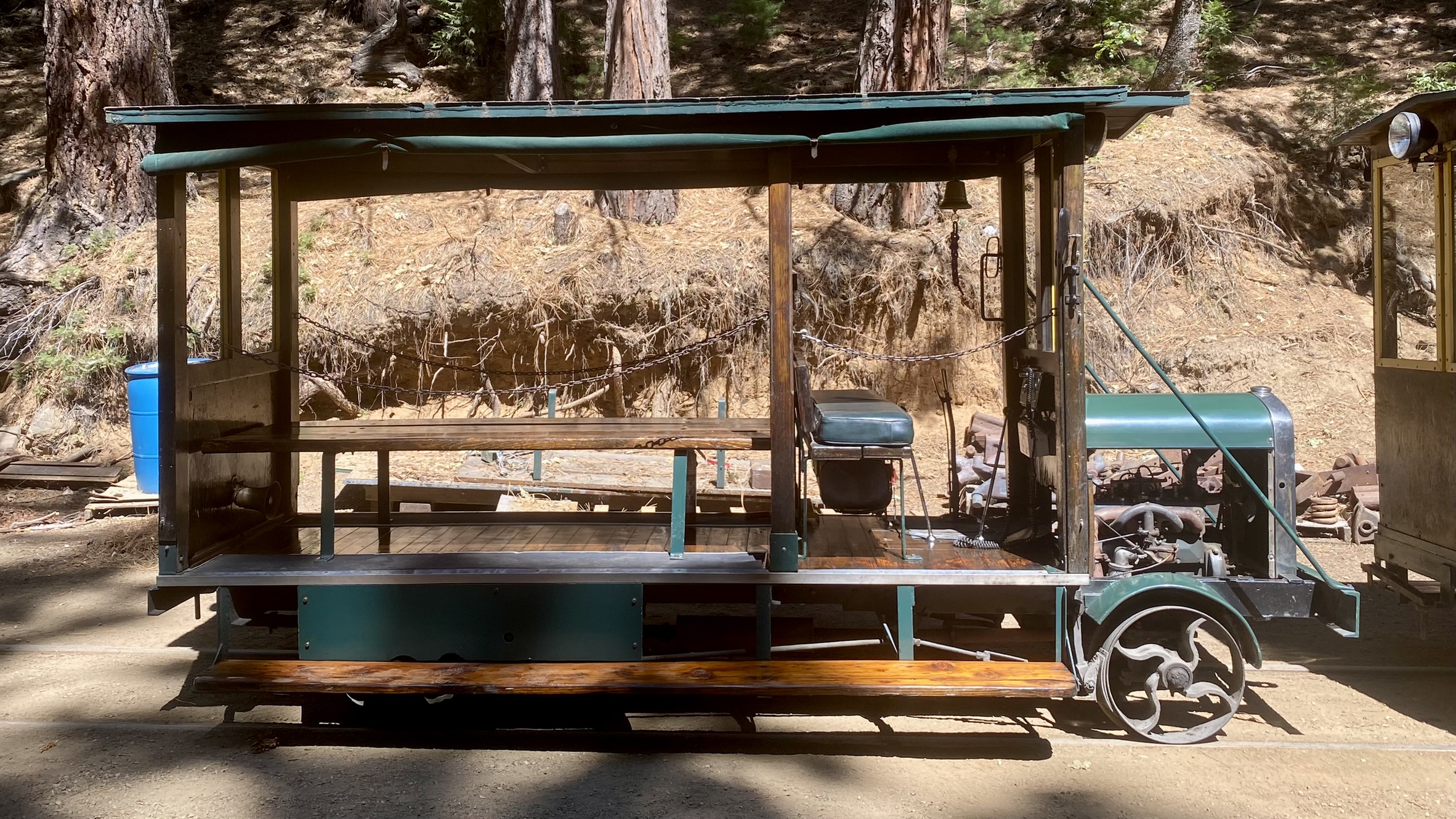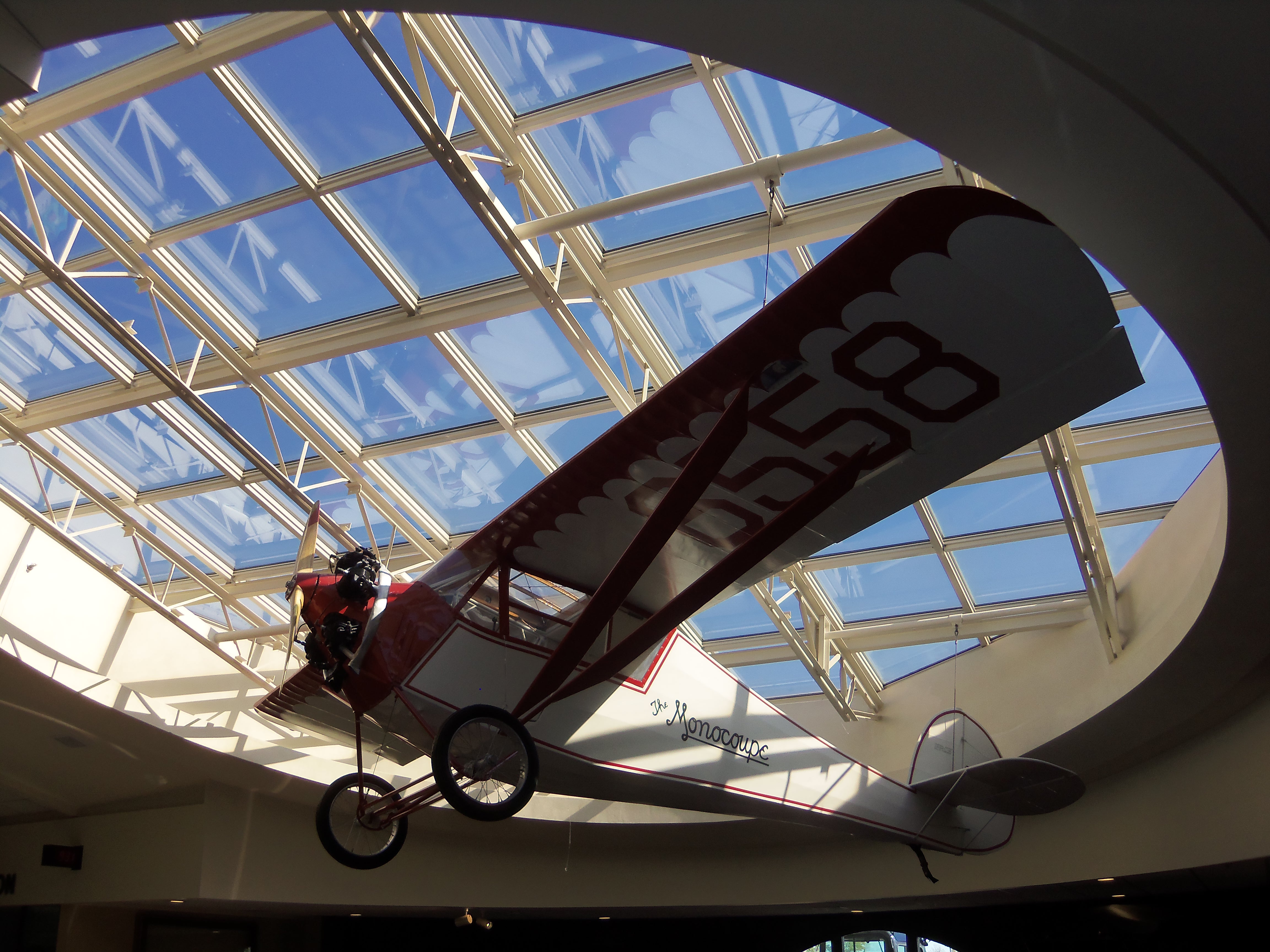|
Kelch Aviation Museum
The Kelch Aviation Museum is an aviation museum located at Brodhead Airport in Brodhead, Wisconsin focused on the Golden Age of Aviation. History Background The idea for the museum came from Alfred Kelch, the founder of Kelch Manufacturing and former president of the EAA Vintage Aircraft Association. Over the years, he had assembled a collection of a number of vintage aircraft at Broadhead Airport. After he and his wife, Lois, passed away in 2004 and 2009, respectively, a trust was formed to create a museum. Establishment Fundraising for the museum began in April 2016. A major financial donation in 2017 funded the construction of a new building. It broke ground on 19 July 2019 and opened three years later on 23 July 2021. The museum announced plans to build a new atrium in January 2022. Facilities The museum is located on at Broadhead Airport , which was founded in 1946 by a returning B-24 pilot named Bill Earleywine. The museum is made up of the Bill & Sue Knight ... [...More Info...] [...Related Items...] OR: [Wikipedia] [Google] [Baidu] |
Brodhead, Wisconsin
Brodhead is a city in Green County, Wisconsin, Green and Rock County, Wisconsin, Rock counties in the U.S. state of Wisconsin. The population was 3,274 at the 2020 United States census, 2020 census. In February 2000, the city annexed a portion of land from the Spring Valley (town), Wisconsin, Town of Spring Valley in Rock County, Wisconsin, Rock County. History Just south of town is a historic marker for the Half-Way Tree, a bur oak supposedly identified by Native Americans as the halfway point on a foot trail between Lake Michigan and the Mississippi River. The railroad track that runs east and west through town features a small museum with a train and army tank on display, adjacent to the park and bandstand pavilion. The museum curator said that the railroad was being wooed by two different towns and decided to split the difference and created Brodhead. A nearby raceway was dredged off of a branch of the Sugar River that diverted a long canal to a hydroelectric generator that s ... [...More Info...] [...Related Items...] OR: [Wikipedia] [Google] [Baidu] |
Franklin Sport
The Franklin Sport is a two seat sport and training biplane built in the U.S. in 1930. Several different engines, in the power range , were fitted. Two remained airworthy in 2011. Design and development The Sport is a single bay, unequal span biplane. Its wings are built around twin spruce spars and, like the rest of the aircraft, fabric covered. Upper and lower wings have the same chord and outward-leaning, N-form interplane struts between their spars provide a wide interplane gap of about . The upper wing is without dihedral but the lower, equipped with Frise ailerons, is set at 2°. Both wings are rectangular in plan out to rounded tips though the upper wing, held centrally over the fuselage on a cabane, has a semi-circular cut-out to increase the pilot's upwards field of view. All the Sport variants were powered by one of three types of five cylinder radial engine, nose-mounted on a frame which allowed easy exchanges between types. The fuselage has a flat-sided stee ... [...More Info...] [...Related Items...] OR: [Wikipedia] [Google] [Baidu] |
REO Motor Car Company
The REO Motor Car Company was a company based in Lansing, Michigan, which produced automobiles and trucks from 1905 to 1975. At one point, the company also manufactured buses on its truck platforms. Ransom E. Olds was an entrepreneur who founded multiple companies in the automobile industry. In 1897 Olds founded Oldsmobile. In 1905 Olds left Oldsmobile and established a new company, REO Motor Car Company, in Lansing, Michigan. Olds had 52% of the stock and the titles of president and general manager. To ensure a reliable supply of parts, he organized a number of subsidiary firms, like the National Coil Company, the Michigan Screw Company, and the Atlas Drop Forge Company. Originally the company was to be called "R. E. Olds Motor Car Company", but the owner of Olds' previous company, then called Olds Motor Works, objected and threatened legal action on the grounds of likely confusion of names by consumers. Olds then changed the name to his initials. Olds Motor Works soon adopted t ... [...More Info...] [...Related Items...] OR: [Wikipedia] [Google] [Baidu] |
Ford Model A (1927–1931)
The Ford Model A (also colloquially called the A-Model Ford or the A, and A-bone among hot rodders and customizers) was the Ford Motor Company's second market success, replacing the venerable Model T which had been produced for 18 years. It was first produced on October 20, 1927, but not introduced until December 2. This new Model A ( a previous model had used the name in 1903–04) was designated a 1928 model and was available in four standard colors. The vehicle was also sold in Europe, but was replaced by locally built cars such as the Ford Model Y. By February 4, 1929, one million Model As had been sold, and by July 24, two million.Gauld, p. 693. The range of body styles ran from the Tudor at US$500 (in grey, green, or black) ($ in dollars ) to the town car with a dual cowl at US$1,200 ($ in dollars ). In March 1930, Model A sales hit three million, and there were nine body styles available. Model A production ended in March 1932, after 4,858,644 had been made in all bod ... [...More Info...] [...Related Items...] OR: [Wikipedia] [Google] [Baidu] |
Welch OW-8M
__NOTOC__ The Welch OW-5M (along with the OW-6M, OW-7M and OW-8M) were a family of American two-seat light cabin monoplanes designed by Orin Welch based on his first cabin monoplane design, the ACA Falcon. Welch's goal was to design cheap and functional light aircraft. The aircraft is a strut-braced high-wing monoplane with an enclosed cabin with side-by-side seats for two. It is similar in appearance to the Aeronca C-3, save for the wing struts. It had a steerable tailwheel landing gear and a nose-mounted engine. The fuselage was constructed with fabric covered welded steel tubing with a triangular cross section. The controls were mounted overhead with an adjustable control wheel that could be positioned for either pilot. Welch developed their own low-pressure wheels and tires for suspension. Welch aircraft were first built by Welch Aircraft Industries, then production moved to Wilkes Barre, Pennsylvania Wilkes-Barre ( or ) is a city in the U.S. state of Pennsylvania and ... [...More Info...] [...Related Items...] OR: [Wikipedia] [Google] [Baidu] |
Waco RNF
The Waco F series is a series of United States, American-built general aviation and military biplane Trainer (aircraft), trainers of the 1930s from the Waco Aircraft Company. Development The Waco 'F' series of biplanes supplanted and then replaced the earlier 'O' series of 1927/33. The 'F' series had an airframe which was smaller and about lighter than the 'O' series, while continuing to provide accommodation for three persons in tandem open cockpits. A similar performance to the earlier model was obtained on the power of smaller and more economical engines.Simpson 2001, p. 573 The initial models were the INF ( Kinner engine), KNF ( Kinner) and the RNF ( Warner Scarab), all of which had externally braced tailwheel undercarriages. Many further sub-models followed with more powerful engines of up to . The most powerful in the range was the ZPF of 1936/37, intended for executive use. Operational history The 'F' series was popular with private owner pilots for sporting an ... [...More Info...] [...Related Items...] OR: [Wikipedia] [Google] [Baidu] |
Travel Air 4000
The Travel Air 2000/3000/4000 (originally, the Model A, Model B and Model BH were open-cockpit biplane aircraft produced in the United States in the late 1920s by the Travel Air Manufacturing Company. During the period from 1924–1929, Travel Air produced more aircraft than any other American manufacturer, including over 1,000 biplanes. While an exact number is almost impossible to ascertain due to the number of conversions and rebuilds, some estimates for Travel Air as a whole range from 1,200 to nearly 2,000 aircraft.Wilkinson, 28 February 2014, pp.? Design and development Design and development The Travel Air Model A was engineered chiefly by Lloyd Stearman, with input from Travel Air co-founders Walter Beech, Clyde Cessna, and Bill Snook and could trace its ancestry back to the Swallow New Swallow biplane. The Travel Air, however, replaced the New Swallow's wooden fuselage structure with a welded steel tube. An interim design, the Winstead Special, was developed by the ... [...More Info...] [...Related Items...] OR: [Wikipedia] [Google] [Baidu] |
Taylor E-2
The Taylor Cub was originally designed by C. Gilbert Taylor as a small, light and simple utility aircraft, evolved from the Arrowing Chummy. It is the forefather of the popular Piper J-3 Cub, and total production of the Cub series was 23,512 aircraft. Design and development In 1930 with C. G. Taylor as Chief Engineer the Taylor Aircraft Company embarked on the production of a two-seat tandem low-powered aircraft, designated the Taylor Cub. The Cub featured a design with wings mounted high on the fuselage, an open cockpit, fabric-covered tubular steel fuselage and wooden wings which used the USA-35B airfoil. It was originally powered by a Brownback "Tiger Kitten" engine. Since the young offspring of the tiger is called a cub, Taylor's accountant, Gilbert Hadrel, was inspired to name the little airplane "The Cub". The "Tiger Kitten" engine roared but was not strong enough to power the Cub. On September 12, 1930, a test flight of the Taylor Cub ended abruptly when the aircraft ... [...More Info...] [...Related Items...] OR: [Wikipedia] [Google] [Baidu] |
Stearman C3B , a surname
*
{{surname, Stearman ...
Stearman is a surname. Notable people with the name include: * Lloyd Stearman (1898–1975), American aviation pioneer * Richard Stearman (born 1987), English footballer * William Stearman (1813–1846) English cricketer * William L. Stearman (born 1922), American government official, aviator and author See also * Stearman Aircraft, a company founded by Lloyd Stearman ** Boeing-Stearman Model 75, a Stearman Aircraft biplane trainer commonly known eponymously as a Stearman *Sterman, a surname *Stermann Stermann is a surname. Notable people with the surname include: *Catherine Stermann (1949–1985), French actress *Dirk Stermann (born 1965), German comedian of the duo Stermann & Grissemann See also *Sterman Sterman is a surname. Notable people w ... [...More Info...] [...Related Items...] OR: [Wikipedia] [Google] [Baidu] |
Rose Parakeet
The Rose Parrakeet was a single-seat sporting biplane produced in small numbers in the United States during the 1930s. It was a conventional design with staggered single-bay wings of equal span braced by N-struts. The cockpit was open, and the fixed tailskid undercarriage had divided main units. An unusual feature was the use of a single strut in place of the usual flying wires. Development Only eight Parrakeets were built by Rose, but the design proved a popular one with homebuilders in the 1950s. Rights to produce kits of the Parrakeet were purchased by Hannaford Aircraft in 1948, and the design was marketed as the Hannaford Bee with structural modifications to strengthen weak points. Kits were marketed right up to the point of Hannaford founder Foster Hannaford's death in 1971, and plans continued to be sold into the 1980s. In 1968, Doug Rhinehart obtained a licence from Jack Rose to produce five all-new Parrakeets. Variants ;Rose A-1 Parrakeet :various engines fitted to th ... [...More Info...] [...Related Items...] OR: [Wikipedia] [Google] [Baidu] |
Pietenpol Air Camper
The Pietenpol Air Camper is a simple parasol wing homebuilt aircraft designed by Bernard H. Pietenpol. The first prototype that became the Air Camper was built and flown by Pietenpol in 1928.Bowers, Peter M.: ''Guide to Homebuilts'', 9th Edition, pages 10-12. Tab Books, 1984. Plane and Pilot: ''1978 Aircraft Directory'', page 150. Werner & Werner Corp Publishing, 1978. Bayerl, Robby; Martin Berkemeier; et al: ''World Directory of Leisure Aviation 2011-12'', page 115. WDLA UK, Lancaster UK, 2011. ISSN 1368-485XTacke, Willi; Marino Boric; et al: ''World Directory of Light Aviation 2015-16'', page 121. Flying Pages Europe SARL, 2015. Development The Air Camper was designed to be built of spruce and plywood. One of Pietenpol's goals was to create a plane that was affordable and easy to construct for home builders. Building an Air Camper requires basic woodworking skills and tools. Builders also need to fabricate some metal fittings to attach the wooden parts together. Some w ... [...More Info...] [...Related Items...] OR: [Wikipedia] [Google] [Baidu] |
Monocoupe 70
The Velie Monocoupe was an American general aviation aircraft manufactured from 1927 to 1929 by the Mono-Aircraft Corp, a division of Velie Motors Corporation (founded by Willard L. Velie, maternal grandson of John Deere). Design and development The Velie Monocoupe was a wooden framed, doped fabric-covered monoplane, seating two people side-by-side in an enclosed cabin (hence the name). Conceived by pilot/businessman Don A. Luscombe, who developed a mock-up in 1926, and developed into a flying airplane by farmer-turned-plane-designer Clayton Folkerts—first produced by Central States Aircraft Corp in Davenport, Iowa—the little plane was a revolution in personal aviation: small, relatively inexpensive, quick and efficient (70-80 mph on just 55 horsepower), and with an enclosed cockpit (protected from the weather) for two people. In an era of big, costly, lumbering, open-cockpit biplanes, the Monocoupe was like a flying sports car coupe.Harris, Richard"Monocoupe: Speed fo ... [...More Info...] [...Related Items...] OR: [Wikipedia] [Google] [Baidu] |







